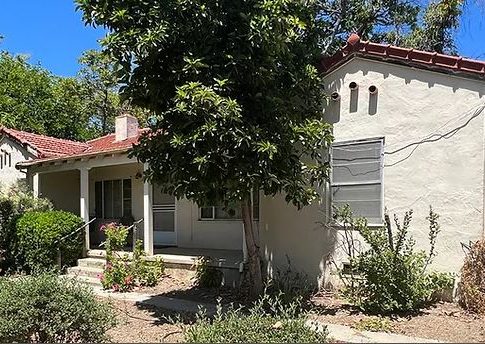By Jia H. Jung, California Local News Fellow
The 43rd Hawai‘i International Film Festival (HIFF) opened Thursday night in Honolulu with a reception at the Halekulani Hau Terrace event space. It runs through Nov. 5.
The first screening was of Uncle Bully’s Surf Skool. Made in Maui with an all Maui cast and crew, the documentary shows how Bully Kotter gave back to his community of Lahaina when his small surf instruction business hit rough waters during the pandemic. Filmed prior to the Maui wildfires in August, the doc preserves images of pre-fire Lahaina while showing the aftermath and Kotter’s continued community work in a coda added just in time for the festival. The film will continue to screen for free throughout HIFF, in solidarity with the #MauiStrong campaign of the now $140 million Maui Strong Fund.
The remaining program of ticketed screenings, panels and special events will continue on O’ahu island until Oct. 22 before rolling onward to neighbor island venues in Lanai City and Kahului on Maui and in Hilo and Waimea on Hawai’i Island from Oct. 26 to Nov. 5, making it the only such event in the country to serve an archipelago.
Free events include select screenings and public events such as a panel on the rise of Hawai’i cinema and a discussion on how to resist the gentrification of climate change dialogues.
LATEST STORIES
HIFF is one of the oldest festivals featuring films from the Asia Pacific and its diasporas in America. It brings together world, U.S. and Hawai’i premieres, plus rare titles and retrospectives from the Americas and the Asia Pacific alongside select independent works from other participating countries.
HIFF began in 1981 as an initiative of the East-West Center, an institution created by the U.S. Congress in 1960 to foster intellectual exchange among people in America, Asia and the Pacific Islands. The first iteration of HIFF played seven films from six countries to a combined audience of 5,000 at the Varsity Twin Cinema at 1106 University Avenue in Mōʻiliʻili district of Honolulu, under the theme “When Strangers Meet.”
By now, the festival attendance has increased tenfold; an estimated 50,000 movie lovers and creators from around the world will file into Consolidated Theatres inside Kahala Mall and Consolidated Theatres Ward over the next 10 days to reunite or meet for the first time under the silver screen.
Under My Umbrella, the Hawai’i-based, community-centric public relations agency for the festival, expressed excitement about returning to an entirely in-person program this year after 2022’s hybrid spread of in-person and virtual screenings of 300 titles from 35 countries.
This year’s program has been hand-picked out of some 2,000 film submissions. Here are some that bring out voices too rarely heard or projected on the big screen:
Hometown Legends and Kahuku Mana first double-featured on Oct. 13. Kahuku Maha follows the Kahuku High School Red Raiders football team as they rally through the loss of three coaches within a short period and reach deep down to their unifying cultural roots to get into the state playoffs. Hometown Legends focuses upon five kūpuna (elders) representing paniolo (cowboys), lawai‘a (fishermen), po‘e ulana (lauhala weavers), pahu (drum) carvers and hoe wa‘a (canoe paddling). Local filmmakers Nainoa Langer and Kolby Akamu Mose sit with these kūpuna as they share the challenges of passing on their mea hana (craft), kuleana (responsibility) and knowledge of ‘āina hānau (native land) to the next generations.
Above and Below the Ground, having its world premiere at 11 a.m. this Sunday, Oct. 15, is an environmental documentary about “punk rock pastors” in Myanmar who team up with women activists to combat a Chinese-built dam that threatens a sacred river.
Orpa, whose first screening is at 2 p.m. this Sunday, Oct. 15, is a road movie about a Papua New Guinean woman who flees to Indonesia to avoid being married off.
Motu Haka, 3rd Generation and Acceptable Fallout are a trio of screenings starting at 5:15 p.m. on Oct. 16, about the fight for the Marquesas Islands, a dance denouncing French nuclear testing in French Polynesia, and Marshallese survivors of U.S. nuclear testing in Micronesia.
No Māori Allowed and Still We Rise, playing together at 5:45 on Oct. 14 and 3 p.m. on Oct. 17, document the history of relations between Indigenous people and Europeans in New Zealand and Australia. No Māori Allowed portrays the small town of Pukekohe reckoning with a schoolteacher’s discovery of segregation and racist abuse in classrooms. Still We Rise honors the history of the Aboriginal Tent Embassy, the oldest occupied protest site in the word.
The Kānaka Maoli Legacy: New Hawaiian Docs at 6 p.m. Oct. 17 will screen four documentaries that highlight different facets of Hawaiian culture. Hōkūleʻa: Finding The Language Of The Navigator is about Native Hawaiian wayfinding traditions. Hoʻoulu Hou, having its world premiere, honors the life and legacy of ʻĪmaikalani “Uncle ʻĪmai” Kalāhele, a Kanaka Maoli musician, poet, artist, and activist from Nuʻuanu, Oʻahu. Ka ʻāʻumeʻume: Navigating Home, weaves together the tales of six Kānaka ʻŌiwi (Native Hawaiians) out in the diaspora. Seeing With Hawaiian Eyes, also having its world premiere, follows a protagonist named Lehia as she starts an Indigenous farm with her partner and father while coming to terms with the Kaho‘olawe bombings (referring to when the U.S. used the area as target practice for years after the attack on Pearl Harbor in 1941).
Mustache, the Hawai’i premiere of Imran J. Khan’s directorial debut, is a coming-of-age comedy about a prepubescent Pakistani American boy. The film will screen at 8 p.m. on Oct. 16 and 2:45 p.m. on Oct. 18.
Songs of Love and Unfinished Story will screen together for their international and U.S. premiere, respectively, at 5:30 p.m. on Oct. 19. Both films will honor the first Korean immigrants to Hawai’i on this, the 120th anniversary of their arrival in 1903.
Twice Colonized, screening at 11 a.m. on Oct. 21, shares the journey of Indigenous woman Aaju Peter, who loses mother tongue and tradition when sent from her birth country of Greenland to Denmark as a young child and moves to the Arctic Circle as an adult, only to witness the colonization of the Inuit people. This sparks her quest to demand a European Union forum for Indigenous people.
Kayo Kayo Colour? (Which Colour), screening at 11:15 a.m. on Oct. 21, is a world premiere and directorial debut of Indian filmmaker Shahrukhkhan Chavada. In a too-rare piece of cinema that focuses on Muslim protagonists in peace, the storyline starts with the daily grind of a working-class family in a Muslim quarter in Ahmedabad and proceeds into an historic day. The film is a nominee for HIFF’s Kau Ka Hōkū (Shooting Star) award.
Asog, screening in its Hawai’i premiere at 8:30 p.m. on Oct. 21, follows the shared adventure of a non-binary teacher named Jaya and a schoolboy named Arnel in a real-life story about surviving the super typhoon Haiyan that ravaged the Philippines a decade ago in November 2013.
HIFF is particularly known for showcasing local Hawaiian filmmakers and rarer Pacific voices in collections of shorts. Here are just some of the showings to catch this year:
- Made In Hawai’i Short Stories on Oct. 16 will provide an 83-minute program of six films showing a diversity of narrative films in different forms.
- University Shorts Showcase on Oct. 17 will highlight 116 minutes of works from college students across the Hawaiian islands.
- I Am Pasifika: Shorts Program on Oct. 19 will play 89 minutes of documentary and narrative shorts exploring conceptions of race from perspectives of people with heritage originating in New Caledonia, Papua New Guinea and Tonga, among other Pacific locations.
- Finding Home Shorts on Oct. 20 will offer 107 minutes of content from six short documentaries about a Noongar and Spinifex Aboriginal woman, a CHamoru jazz pianist, Marshallese nuclear exiles, a Samoan American man torn between football and acting, a Morman family of German Hawaiian immigrants, and a Māori butler caught up in a century of colonial crimes in New Zealand.
- Environmental Shorts on Oct. 21 will showcase 130 minutes of 10 mini documentaries that show and tell how climate change is affecting global sites from Ecuador to South Africa to the tiny Pacific Island nation of Tuvalu to remote villages on Alaska’s coast.
Since HIFF’s incipience, approximately 1.4 million people – the same number as the residential population in the Hawaiian islands – have engaged with the event.
Further, HIFF keeps a running Film Industry List of resources for filmmakers and directors on its site. In 2021, HIFF launched its first production project – Makawalu, a mid-career development program fostering Native Hawaiian film creators and culminating in a feature-length film. The organization also places films into in-flight airplane services and conducts education programs that reach over 10,000 K-12 students in Hawai’i each year.
AsAmNews is published by the non-profit, Asian American Media Inc. Follow us on Facebook, X, Instagram, TikTok and YouTube. Please consider making a tax-deductible donation to support our efforts to produce diverse content about the AAPI communities. We are supported in part by funding provided by the State of California, administered by the California State Library in partnership with the California Department of Social Services and the California Commission on Asian and Pacific Islander American Affairs as part of the Stop the Hate program. To report a hate incident or hate crime and get support, go to CA vs Hate.










